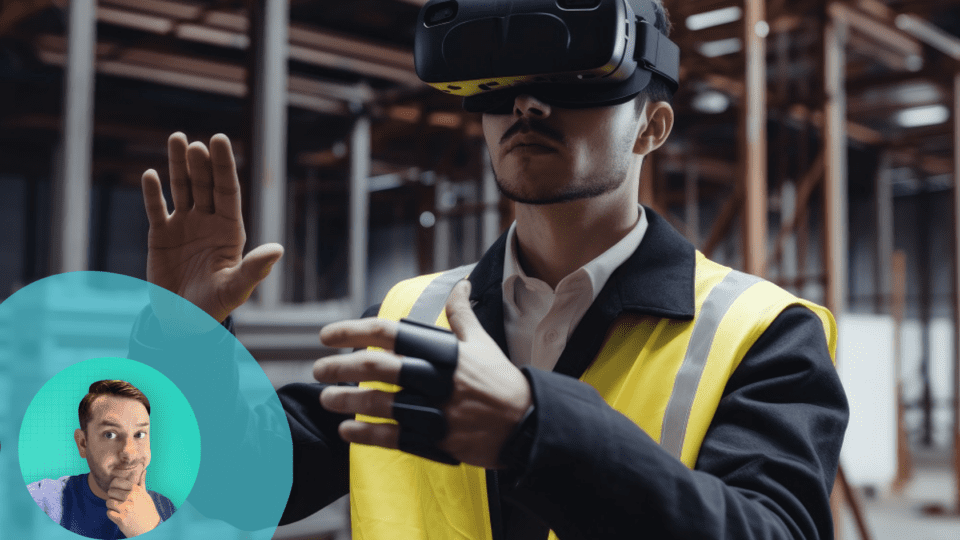As we fast approach Q4 2023, there is one topic at the forefront of every retailer’s mind: holiday shopping. And if Amazon Prime Day sales and back-to-school shopping trends are any indication (hint: we know they are), then this year’s Cyber 5 is going to be one for the books.
Which means now is the time for retailers to reset and reevaluate. They’re likely asking questions of their marketing and sales team concerning performance and outputs. They’re likely challenging set strategies in a desire to better innovate.
They’re likely also emphasizing continual training of new employees, as the retail industry can be quite fickle and turnover is often high.
The key to success? Virtual reality (VR). According to a PwC survey, employees who partake in VR training train 4X faster than those who train in a classroom, and are 275% more confident to apply skills learned after training. Those are already staggering numbers, and the recent unveiling of Apple’s long-awaited virtual reality headset only continues to drive relevance and interest forward.
Advertisement
The proof of potential is there. The question is: how can retailers best leverage the technology to land the strongest sales performance outcomes? Let’s explore.
Align the Tech to the Business Goals
This may seem like an obvious place to start, but it’s of grave importance. Think about the store’s business goals and where VR might be able to move the needle. Is it onboarding, customer service, product knowledge, soft skills, selling skills, safety or compliance? Chances are it’s a mix of quite a few of those.
For example, a retailer that has a goal to boost Black Friday in-store sales by 15% this upcoming season could implement VR training now to prepare associates for the Black Friday shopping scramble by running them through different scenarios likely to arise. Or a retailer could want to strongly emphasize high-quality customer service based on recent, and repetitive, negative customer experiences in select stores. That retailer might leverage VR training technology to educate those retail associates on the importance of remaining hospitable in hot-button customer situations.
Identify the most important business goals and evaluate where VR might make the biggest difference. That’s where to start.
Supplement the Training Toolkit
Evaluate the types of training assets already in place. Is there one area that needs more engagement or visual experiences? Is there an area where in-person training is most valuable, but there have been challenges scaling?
Take, for instance, a brand like Samsung. In 2022, the company’s home entertainment division recognized challenges they needed to overcome, and quickly, to improve the education experience for associates and drive stronger retail conversions. We worked with them to launch an Immersive Learning Theater on the Borderless platform.
Through it, training managers could launch new instructional content to more than 200,000 retail associates scattered across the U.S. within minutes. It completely reimagined Samsung’s approach to retail training by allowing Samsung to implement immersive VR experiences at scale. Since implementation, Samsung has seen a significant sales lift in stores where VR training was used compared to stores not using VR training.
Keep the Customer Experience in Your Purview
How will leveraging VR training help improve the customer experience? Is there an area that can improve the associate/consumer interaction? Customers are more likely to be repeat customers (and high-value customers) when they walk away with a memorable experience. Employees who are well-trained and who feel well-equipped to handle any and every customer interaction effectively will perform better.
Implementing VR training will not be without its challenges, but the future is promising. If done right, it is effective and the long-term payoff is incredible. It is a great way for employees to test, experiment and better understand what works best for their shoppers.
Matt Robison is the Founder and CEO of Borderless, an innovative no-code VR experience creation platform. With an impressive track record in the consumer electronics and retail industry, he is a rising innovator in the world of VR technology and marketing. Prior to founding Borderless, Robison entered the consumer electronics and retail industry in 2012, leading a global sales and strategy team for Beats by Dre. In this role, he provided strategic insights and support to maximize sales, marketing, and product development. As part of the Beats organization during the acquisition by Apple in 2014, Robison played a critical role in aligning sales channels and strategies during the merger. Robison holds an MBA, Masters in Engineering and Bachelors in Engineering degrees from Cornell University.




